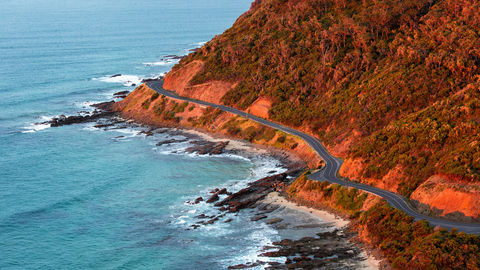
Melbourne has top-notch food, buzzing nightlife, and a world-class coffee culture. But for unspoiled Australian splendour, you must hit the Great Ocean Road. By Shaikh Ayaz.
“It jumped, jumped, jumped,” says Jimmy Chen, recalling his last trip at Kennett River, Victoria, with an Indian family trying to spot a koala in the wild. Chen is our garrulous Taiwanese-Australian driver-cum-official koala spotter who, along with guide Tony Poletto, has promised us a date with the little munchkin. Chen is a short, sprightly man, who likes to discuss Indian food in graphic details even as he chomps on sumptuous multi-cuisine spreads at our many stopovers dotting the Great Ocean Road. With him around, we are in safe hands. (Or, are we?) So, every time Chen so much as swings a sideways glance, we follow his gaze like students of tai chi, in the hope of spotting the cuddly marsupial who lazes around for 22 hours on the breeziest of tree branches, swaggering out occasionally only to feast on the tastiest of eucalyptus leaves.

“He’s the public servant of the animal kingdom,” says Poletto, wearing a sardonic grin. “So, we have to time our visit exactly in those two waking hours of a moody koala. How do you know which two hours of the day?” our Malay companion quips through his braces.
We have been at Kennett River for over an hour. Our koala-spotting so far has comprised numerous views of the cuddly animal’s butt. If the never-ending lines of curious visitors have taught the koala anything, it’s how not to give a flying fig about anything that happens in the world below. Spring is just making its presence felt here. The breeze is a relief, but the notorious Australian sun blazes down, a free-floating giant on vast skies. Will the koala get down for the gum?
Everyone wants to pet him, pinch his cheeks to see if he’s real. Forget hoi polloi, even the royalty can’t get enough of him. Down under, October’s headlines are full of colourful speculations about whether Prince Harry and Meghan Markle—their visit coinciding with ours—would follow in the cute tradition of koala-jhappi. They did, including meeting joeys
named after the Duke and Duchess of Sussex.
“I want to be a koala in my next birth,” Chen says now, wishfully. A walk in the outback is therapeutic, I tell him. But we have had our share of the animal planet. Arriving in Melbourne via Kuala Lumpur with AirAsia X’s Fly-Thru service on a damp October night, we had skipped the hurly burly of the bay to head upcountry.
One For The Road

Our first stop is the Werribee Open Range Zoo. Single and ready to mingle, the giraffes are putting on a serious bromance display for the onlookers, as we embark on an open-bus safari. Look, hippos! “They fart a lot,” the guide informs. It’s not a joke. He means it. “And they can run up to 40 miles (64 kilometres) to find the grass they like.” Hippos make great moms, we are told, but the homo sapiens with us seem to disapprove of them. From Werribee, it’s down the coast to Geelong, all in preparation for the ultimate prize—the Great Ocean Road (GOR). An industrial town, the wealth of Geelong “came off the back of sheep with the national wool shipping sold globally from right here,” says Narelle Needham, of Tourism Greater Geelong and Bellarine. “All that changed in the 1980s with the emergence of online sales and other selling platforms,” she continues. Today, in a nod to its manufacturing past, Geelong’s entrepreneurs have repurposed old warehouses and factories into vibrant restaurants and exhibition spaces. The culinary scene is fast climbing up the charts, drawing comparisons with its more famous cousin, Melbourne. Needham has been living and working in Geelong for six years. She plays host to us at The Q Train, a luxury restaurant on wheels going from the historic Drysdale railway station up to Queenscliff. As the waiters ply diners with delicacies made from fresh local produce and Chardonnays and Pinot Noirs from the Victorian climes flow freely, it’s a good time to reflect on why Australia is more than just cricket and kangaroo. What’s the secret to Aussie wine? “The flavours,” Narelle claims. “Fresher and more vibrant. They are a reflection of the maritime climate. Many of our wineries hug the coast and are close to the sea air.”
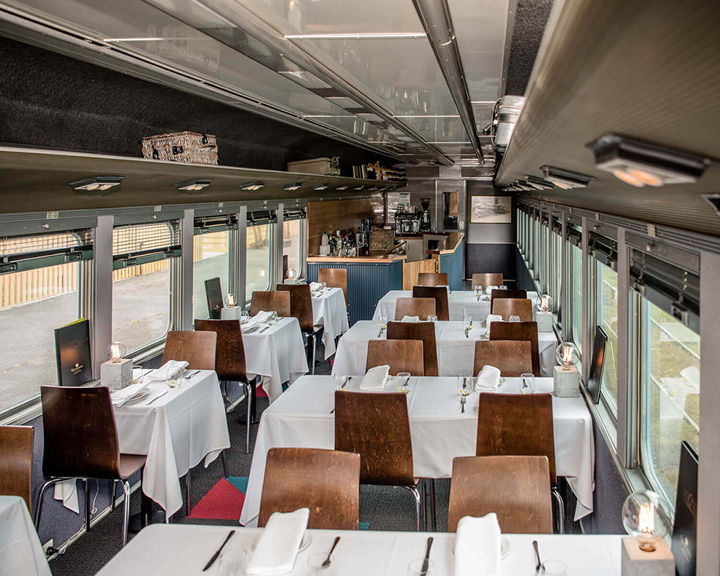
Outside, the streets of Geelong are all lit up. The inaugural White Night, an event received favourably in Melbourne and Ballarat earlier, has encased the city’s buildings, parks, and museums in LED lights, installations, and night-long entertainment. Indeed, the entire Geelong is partying into the wee hours as we dawdle back to the hotel for the night.
Inside A Scenic Bollywood Movie
“Take your time to enjoy the sights. Don’t rush it,” Narelle had advised us the night before, about the Great Ocean Road. A magnificent 243-kilometre coastal stretch, it starts at Torquay and runs all the way to Allansford. It combines many things that Aussies
adore—firstly, a great outdoors. This is a country that loves being out, in the rough and tumble of nature. With beaches, clifftops, national parks, untamed wildlife, starry skies, and near-deserted infinity-kissing roads (1.2 million cars ply here annually), the Great Ocean Road belongs in a Zoya Akhtar movie on road tripping. Whether you look like Hrithik Roshan or not, feel free to stop by at strategically-placed lookout points for that selfie.
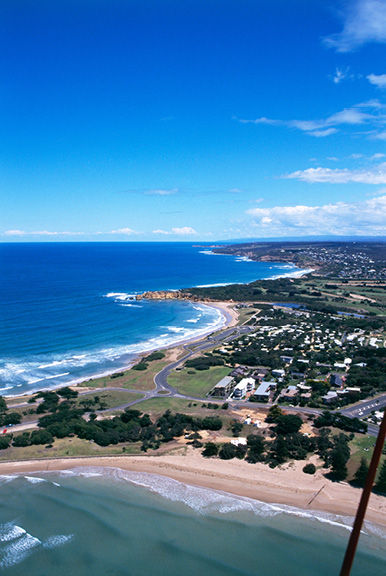
However, if you feel like miming waves out of the car window, à la Mr. Roshan in Zindagi Na Milegi Dobara, let me shoot it straight—don’t try such stunts on the Great Ocean Road. The Southern Ocean wind hits you with great force and speeding cars, even more so.
The story goes that the Great Ocean Road, the world’s largest war memorial, was built in sections by the WWI servicemen. “We were in severe Depression after the World War,” Poletto explains. “A lot of the men who came back after WWI discovered that the factories they worked for had vanished and the jobs they held no longer existed. So, the government said, ‘We have to do something here. Why not build a road for the ships?’” At a vantage point in Lorne, one of the several seaside towns along the Great Ocean Road route, Poletto points in the direction of Tassie. That’s Aussie shorthand for Tasmania—or as one cheeky local put it, “a dot on Australia’s bum.”
Next comes the 12 Apostles, more photographed than Hugh Jackman. You’ll find these rocks (only eight are left) on most Aussie postcards. Cursed as a shipwreck coast for obvious reasons, the 12 Apostles has witnessed the wreckage of hundreds of ships including the tragic Loch Ard, with a cabin boy named Tom and a young woman called Eva (who survived by spending the night in a cave), that’s waiting to be turned into a Titanic-style blockbuster. In Princetown, we hop onto a chopper for a bird’s-eye view of the site. From the top, you see not just the limestone rocks, but also beaches spilling over with passionate surfers. The violently lashing waves that have grounded ships cannot keep the coastal Aussie away.
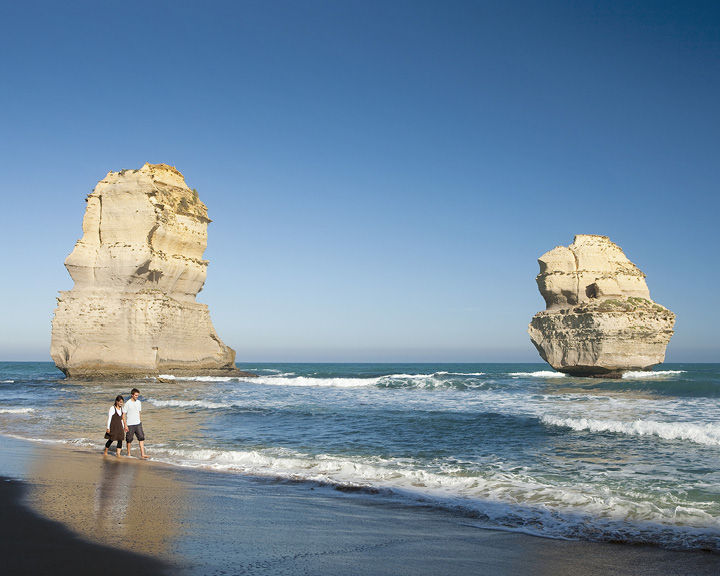
Why Aussie Wine is Flourishing
In India, we like to talk about Australian wines in lofty terms. How did it get so good, the oenophiles wonder. The French and Italians still hold the key to the ancient secrets of wine-making, but Oz bubblies, relatively new, have had a sales spike in the last decade. Narelle Needham had said the secret lay in the “flavours.” Owned by the Sharps, Jack Rabbit Vineyard, a tongue-in-cheek ode to the hundreds of rabbits that once frolicked around the property, sits on gently rolling paddocks. The Bellarine and Geelong are the Australian answers to Burgundy and Bordeaux. Facing the bay, they have the climate conducive for the aromatic grape. The Sharps are an amiable couple, with wife Lyndsay doing much of the talking as David enjoys taking the back seat. Discussing the region’s burgeoning popularity, Lyndsay Sharp says, “Bellarine is both diverse and bountiful in many ways, enjoying good water holding capacity, and the top soil drainage facilitates exceptional viticulture. Many vineyards on the Bellarine boast their own micro-climate with gentle north-facing slopes and excellent wind-protection from tall trees. The region experiences long, slow ripening periods and a moderate-to-low rainfall, which results in relatively low yield but high-quality fruit.” The other factor that sets the Bellarine apart as a wine region is that all vineyards and wineries are family-owned and operated, and that explains why “there is a lot of passion and pride in the grapes that are grown and in the wine that is crafted.” Australians themselves are the biggest advocates and ambassadors of their wines. “People these days are conscious of what exactly they are putting in their mouth, be it wine or food. They want to know where a product is grown, how it was made, and all things that surround the evolutionary story of what they are consuming. There is a keen focus on all things natural and unaltered,” says Sharp. You need to only drive around the Bellarine to realise that this is a region of inherent beauty and integrity of agricultural and viticulture practices.

This has been as much a gastronomic journey as a road trip for us. The Aussie culinary scene is rich, multicultural, and riding on the back of the global popularity of Masterchef Australia, the ‘it’ thing to do. Mun Soon, a well-known architect who runs the artsy Krimper Cafe in Melbourne, says international flavours are changing the way Australians eat. “When I came here in 1976, all the Australians knew about Chinese food was long and short soup. Today, you get everything here. I don’t need to go back to Malaysia for good Malaysian food.”
Trailing the Great Ocean Road, all kinds of eateries pop up. Drive through the smaller towns, and you will find something of your choice every half a kilometre. Drop by at Jack Rabbit Vineyard for its views of the bay, La Bimba in Apollo Bay, or Zigfrids Dining Hall & Bar in Geelong. The dishes are fresh—mostly seafood—and the ambience, unhurried. Whether you like smoked duck, Portarlington mussels, Angasi oyster, or kangaroo meat, the Aussie passion for eating knows no bounds. Most restaurants, La Bimba for example, believe in “ethical sourcing.” A note on its menu reads, “the farmer and fishermen get a fair price and the animal a good life,” thus capturing the true essence of the Australian food industry’s spirit. It might be a good idea for parents with kids in tow to check out the Great Ocean Road Chocolaterie and Ice Creamery, just ten minutes from Torquay, for some quick indulgence.
Hidden Secrets of Melbourne
Back in Melbourne to spend our last two days, I opt for a guided tour of the city that reveals its little-known gems, which bucket-listing travellers tend to zip past. We meet our guide, a 20-something girl with an umbrella, opposite the landmark Eureka Tower looming over the Melbourne skyline, a legacy of its gold rush days. The first stop is the Cup of Truth, tucked away in a subway, that apparently sells the best coffee in Melbourne. The only time when there’s no queue is when the cafe is shut, one local jokes.
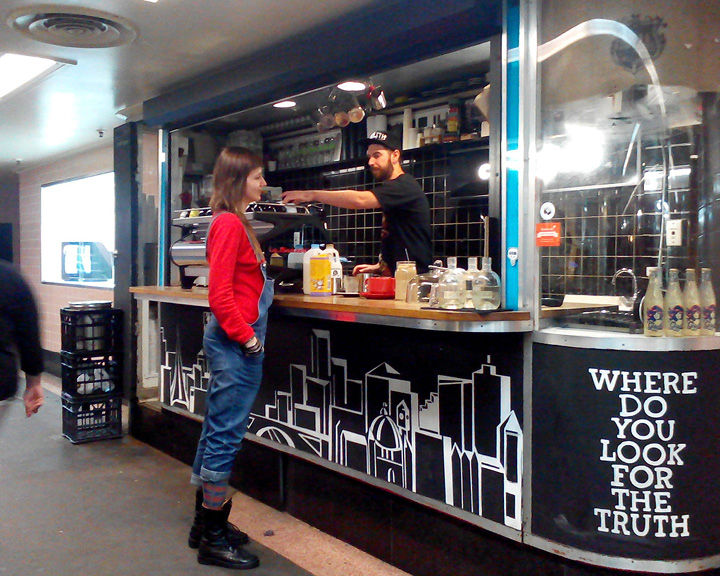
Coffee is the Aussie’s favourite poison. Much of the local culture is underpinned by the beverage, which was introduced by Italian and Greek immigrants back in the 1950s. The coffee-crazy Melbournians will go to any length to get a decent cup of joe. “No offence to
Starbucks, but that’s not what we are into here,” the guide says. “We like our coffee small. Smaller the better, quirkier the better, and harder to find the better. We like one-of-a-kind local cafes, so that we know we are the only ones that know about it.” So, after a much-needed shot of caffeine, we take off to explore the city on foot, pausing at the Flinders Street railway station, the plans of which were allegedly exchanged with Mumbai’s CST station. “The Russian weightlifting team ruined its floor in the 1956 Olympics. It became a rubble and has been empty since,” the guide explains, adding, “It’s on the front of every major book on Melbourne and postcard. We know what the front looks like, but we have never been inside.” She looks at the building with pride. “It looks brand new to me. But then, they cleaned about 10 tonnes of bird poop from it.”
We follow the tram as it snakes through the city, passing back-lanes brought alive with colourful street art, shopping arcades, and bustling restaurants. On another coffee break
near Collins Street, the conversation shifts to the hot button topics of politics, racism, and immigration. Anybody living in Australia today cannot remain unaffected by these pressing questions. Our guide points out a truth that we usually take for granted when talking about
the country. Yes, it’s blessed with continent-sized land mass. “But our inland is mostly uninhabitable outback. Much of Australia lives on its coast. So, the land is there, but it’s
still not there,” she says. What about stray instances of racism? People in the country are insular, like in Middle America, she agrees. “But in Melbourne, it’s all mixed up. We are pretty open.” Politically, Aussies like nothing but the best. “We are notorious for throwing out our Prime Ministers rather quickly,” she remarks, laughing. Australia’s enthusiasm for immigration is remarkable, The Economist wrote recently. “Some 29% of its inhabitants were born in another country—twice the proportion in the US. Half of Australians are either immigrants themselves or children of immigrants.”

One rainy evening, I am onboard the Melbourne Star, a luxury observation wheel that offers a 360o view of the urban cluster. Only four years old, it’s already a fixture on Melbourne’s skyline, a major tourist draw on a par with the much older London Eye. It’s a runaway hit with Indian and Chinese travellers, especially the romantic types looking to surprise their beaus by popping the ring on a first-class private cabin. Of late, an unlikely Indian phenomenon has gripped the Melbourne Star—yoga! They offer daily classes, with two to four participants in a cabin with an instructor in a two-rotation spin lasting an hour. “Back in July,” recalls Nicole Hill from Melbourne Star, “we filled the entire wheel with 21 instructors, so we had over 100 yoga lovers doing a class on International Yoga Day.”
An unexpected drizzle proves what I have been told repeatedly by locals—you get all the weathers here in a single day. The next afternoon, we have a date with the Melbourne Cricket Ground. My Indian colleague has guilt-tripped me constantly saying that the “collective responsibility of all cricket-obsessed Indians rests on us.” Frankly, the MCG is as
magnificent as it looks on TV. “Let’s go down to the ground,” says Roger Canty, a former teacher who now conducts guided tours of the mecca of cricket. Team India is one of the select few to get a great reception at MCG. An old-school country gentleman who likes his cricket in the classical form, Canty inevitably sides with Dravid over Tendulkar, in what is one of the most divisive cricketing arguments. Touring the MCG, we stumble upon one of the most recognised cricketing photos of all time—Sir Don Bradman and Sachin Tendulkar, when the latter visited the legend years ago.
“Who’s that little guy from Mumbai? What’s his name?” Canty shoots one loaded with howzat sarcasm, as I admire the memorable 1998 image. He obviously says it in jest. But I take it seriously. “Tendulkar! Tendulkar!” I yell excitedly, registering the sarcasm only much later, when I catch Canty having the last laugh. Good bosie, Captain!
GETTING THERE
Fly to Tullamarine Airport in Melbourne via Kuala Lumpur. AirAsia also runs direct flights to Avalon Airport, located about 52 kms (35 minutes journey) from Torquay.
STAY
Novotel Geelong (from Rs 10,617) is a smart choice. Situated on the waterfront, it offers easy accessibility to the Great Ocean Road. Whitecrest Great Ocean Road Resort (from Rs 14,300) is another reliable option to stay close to all the action.
Moreover, the nearest beach is just five minutes away.
VINEYARDS
A good way to experience Australia is through its wine. Experience cool-climate wines of Geelong and the Bellarine by booking tastings at Jack Rabbit Vineyard.
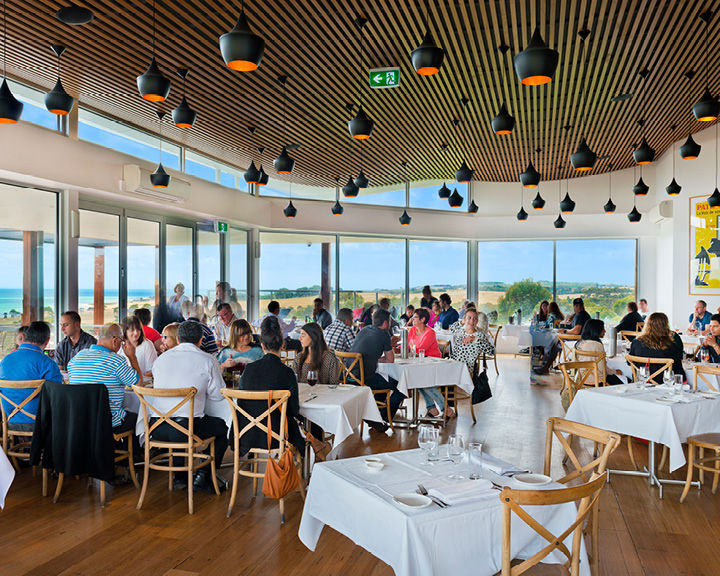
BEST TIME TO VISIT
Spring (September-November) and autumn (March-May). The weather then is pleasant for
outdoors, surfing, etc.
Related: 11 Cool Bars in Australia Are Serving Wine On Tap. Where to Find Them










